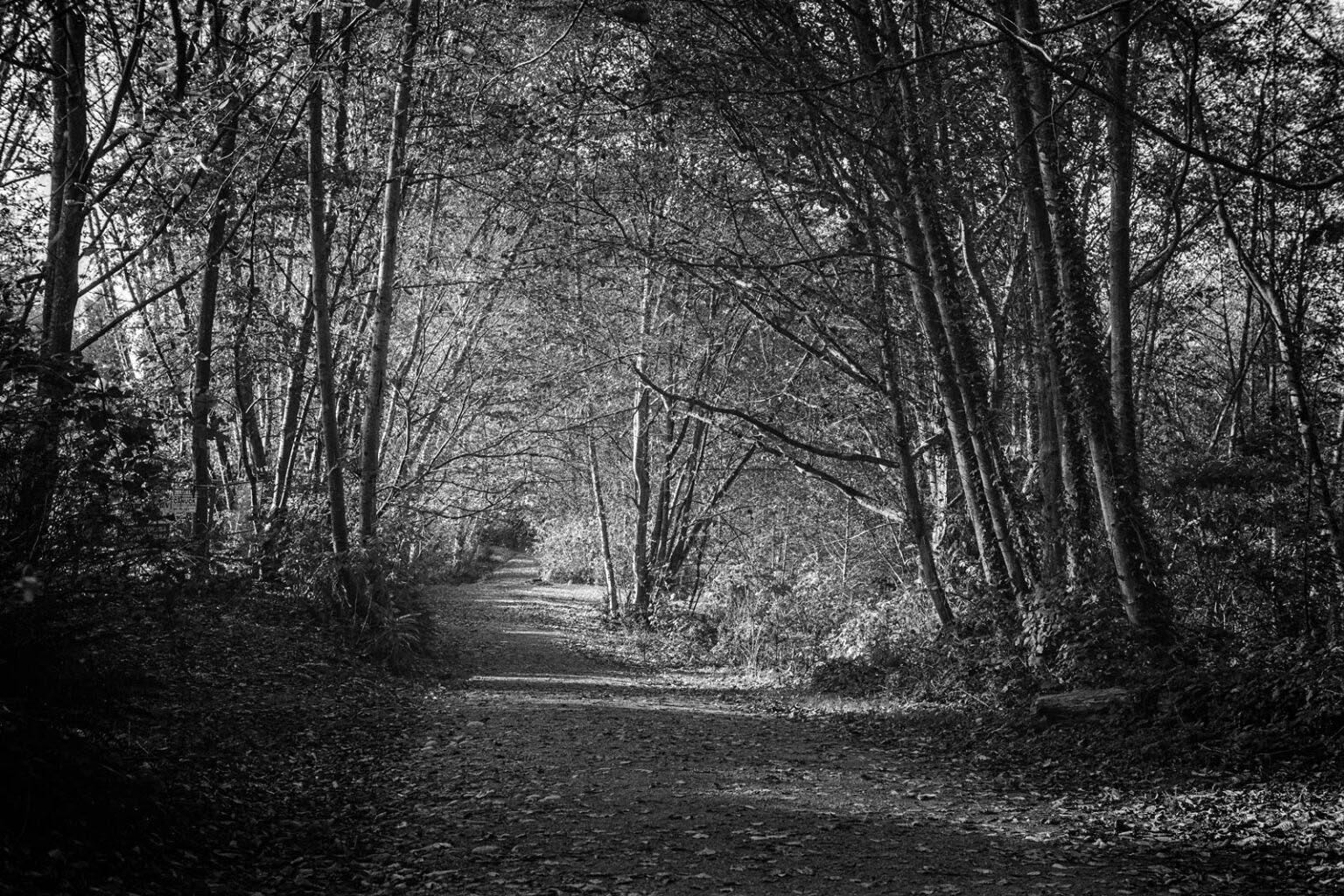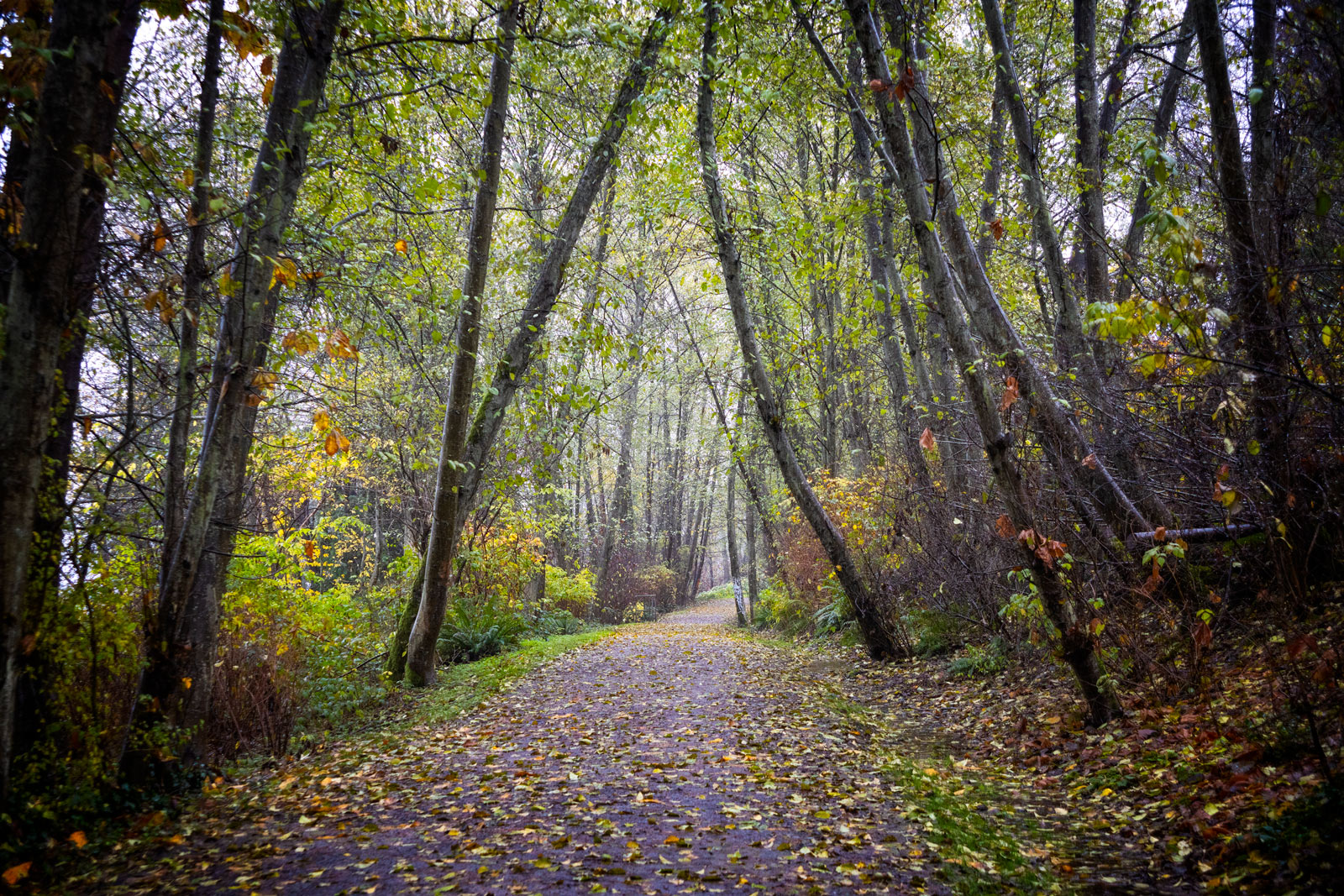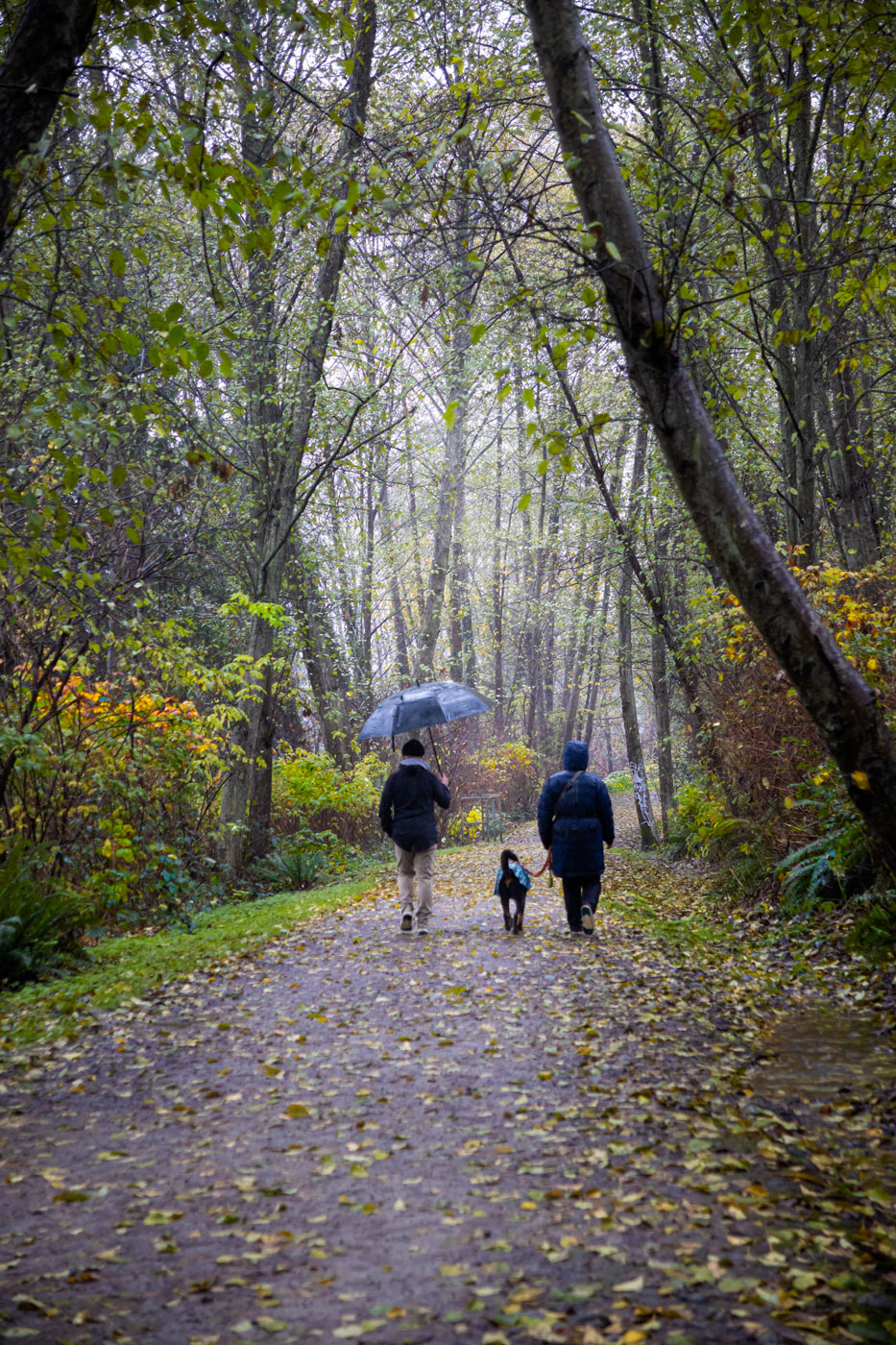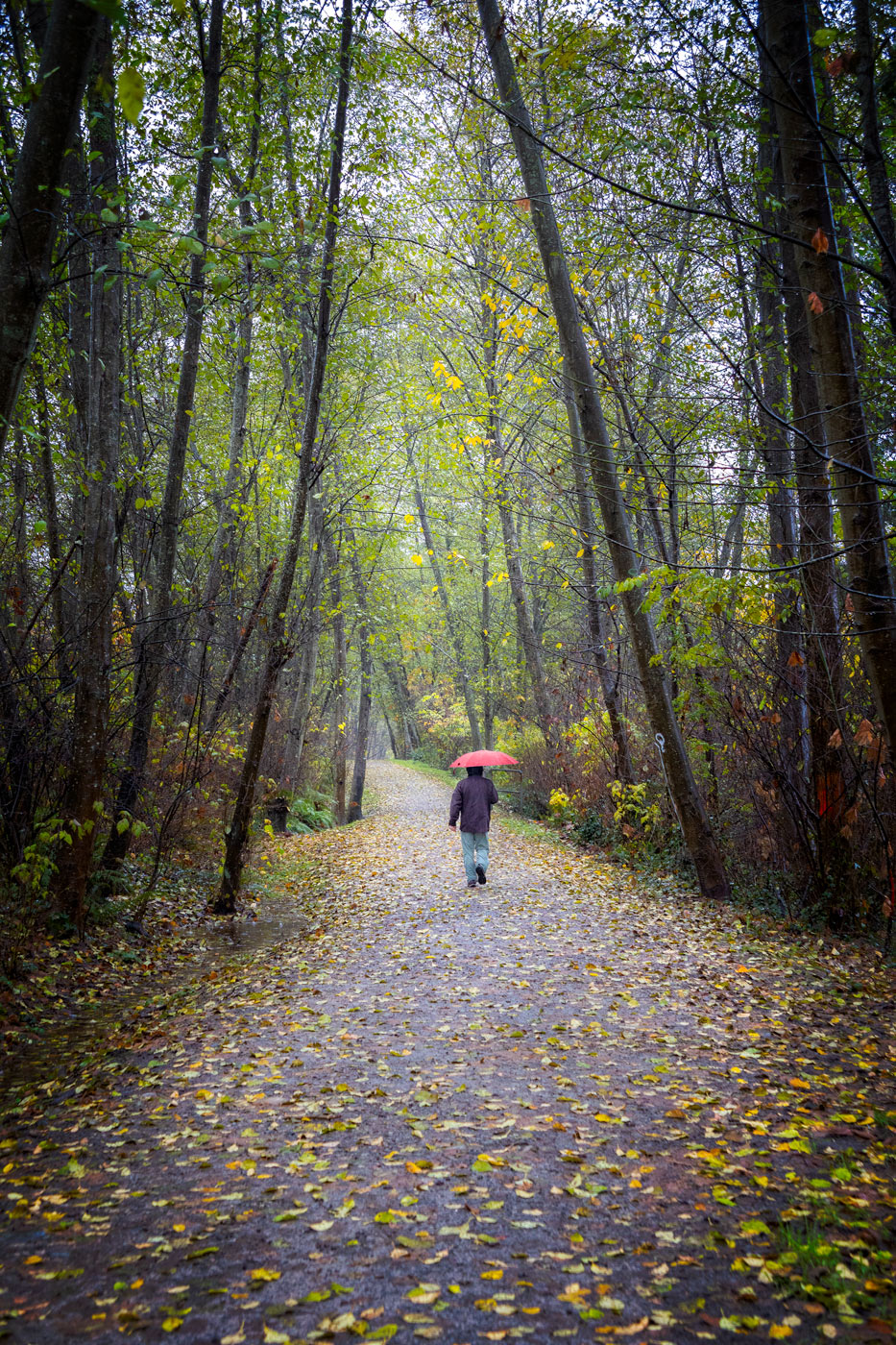This is our path in the woods high above the ocean where we walk in the forest. We are so lucky to have this lovely wilderness to walk in just outside our front door.
Pictures in the Rain
It rained yesterday. It was cold and misty and the rain came in a flood. I learned long ago that just because it is raining you do not put your camera away. In the rain the world is all shinning reflections and vistas fading into the mist and the light is grey, muted, full of emotion. So I decided to go for a walk and take some pictures.
Susan and I are lucky in that we have a forest path not far from our house where we can walk under the trees on a winding trail and look down on the ocean
through the bushes. It is a delightful walk that we follow, usually in sunshine, and it leads us for about 10 km before we are home again.
Now, shooting in the rain is not easy. I am not a masochist so I carry an umbrella and for my camera I carry a bag in which I have a supply of lint free microfiber cloths to keep my gear dry. Canon says my cameras and L series lenses are weatherproof but I don’t like having wet gear in my hands. So I try to keep everything dry as much as possible.
Our forest walk when it is wet with rain. The muted colors of green and brown glow in the feeble light.
I was surprised that so many people came out to enjoy the experience of walking in the rain. Their presence adds a sense of scale to the trees and bush alongside the path.
It is a bit of a chore balancing all of this stuff, keeping the umbrella overhead, keeping the lens down so no water gets on the front element, making sure the cloth stays on the camera until I take my picture, composing in the viewfinder, and …. Opps – there goes the umbrella akimbo. You get the idea.
The rain clouds were thick so the light level was low and when I walked in under the trees the light fell off even further. I ended up shooting at ISO 1200 at around 1/90 second and f/3.5 to 5.6. I should have been using a tripod but I did not want to add that complication to an already difficult balancing act. I was out doing errands for Susan and was taking a few minutes only to take a couple of pictures. I did not have a lot of time.
I had in mind pictures from that trail I had taken in good weather that were dark and moody and really interesting. My thinking was to add to those a dimension of mist and mystery. And as I took pictures and reviewed them on my LCD screen I began to realize that the camera and I had different goals in mind. The camera wanted to balance the light, to expose the shadows and highlights so both were within the dynamic range of the sensor. The camera was not interested in mood or mist or mystery. It wanted a technically correct exposure and nothing more.
And that is what I got. When I went home and looked at my images in Lightroom the histograms were perfect and the images were flat and, frankly, not what I had seen on the trail. The camera’s rendition was not truthful, and, not what I had hoped for at all! However, every pixel was within range and useable. Nothing was blown out. And I had all of the information the camera had recorded looking at the scene.
But how could the camera know what I was seeking? It is a
machine designed to please all tastes and so the result tends to be bland. But everything you need is there. And once you have your image file, the creativity can continue.
Now this is where I part company with those who look on post processing as phony photography. Modern cameras do not see what is before them. They see what their technology can record of what is there but they have no idea what is pleasing to the photographer. Whether they reproduce the image as the photographer saw it is a very hit and miss proposition. Usually the camera does not get it right.
And so you see that sunshine is not necessary for good pictures. Old familiar places can become new again by simply taking the trouble to go out in the rain with your camera. The light is different, the colors are muted and the water adds reflections and intensity to the image. And all is softness.
So there I sat, my photograph taken and up before me on the screen. Now I had to create what I saw and what I envisioned by using the tools available to me: Photoshop, Light Room, Camera Raw, OnOne and a couple of other programs. But these programs don’t know what I want either, any more than a paintbrush knows what the painter wants.
And in the argument about whether photography is art the antagonists in the debate are arguing about the images cameras take and not the images that photographers make. There is a world of difference. The former is seldom “art”. There is no creativity in standing before a sunset and snapping a shutter. However, there is “art” in producing a fine print of a sunset that stirs memory and the soul.
I am not a master at my software tools but I am learning. I adjust my picture and then I sit and look at it. I figure out if it is what I want and I plan changes. And the layers on the image build up and slowly the picture I saw in my mind before I went out with my camera begins to take shape. At least it does sometimes. Not every image I capture contains within it the magic.
Photography is so much more than a click of the shutter. That is only the beginning of the process to create a fine print. But it is only the beginning. The part of the process where I have the camera to my eye is a fleeting moment in a long process of creativity.
It is a false argument to talk about photography and whether it is “art”. We don’t talk about whether a painter’s brush technique is art. It is not. It is a craft whereby art can be made. In like manner, photography is a craft whereby art can be made. The true argument is whether a particular photographic print is “art”. Not all prints are. But then too, many paintings fail this test as well.
I am not sure if I have been successful in my quest this time out. I leave you to judge from these few examples. But regardless, I will try again. After all, tomorrow is another day!
This website is the work of R. Flynn Marr who is solely responsible for its contents which are subject to his claim of copyright. User Manuals, Brochures and Advertising Materials of Canon and other manufacturers available on this site are subject to the copyright claims and are the property of Canon and other manufacturers and they are offered here for personal use only.





